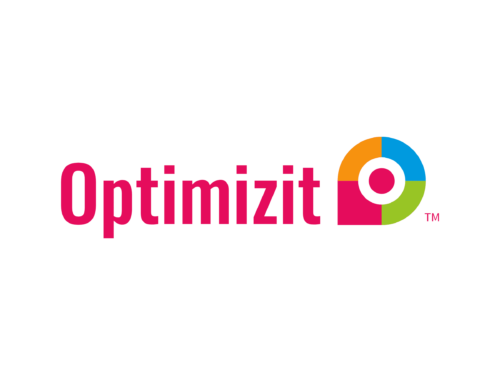As more businesses realize the importance of search engine optimization (SEO) in the success of their digital presence, one aspect of SEO often remains underappreciated: technical SEO. While content and off-page optimization efforts garner much attention, technical SEO is the foundation upon which everything else is built. Ensuring that your website is functioning optimally and easily accessible to search engines is vital to excel in the competitive digital space.
In this comprehensive guide, we will explore the cornerstones of technical SEO and delve into the best practices and techniques that are crucial to optimizing your website for superior performance, search engine visibility, and exceptional user experience. Moreover, we’ll illustrate how partnering with a trusted, results-driven agency like Optimizit can assist you in implementing an effective technical SEO strategy, providing a hassle-free and affordable solution for maximizing your website’s potential and driving organic growth.
Technical SEO encompasses a wide range of factors that impact how search engines crawl and index your website, including website architecture, crawling directives, and structured data management. To create a search engine-friendly website that performs at the highest level, you need a deep understanding of these factors, expertise in using the right tools, and the ability to identify and fix issues that could negatively impact your website’s performance.
This is where a partnership with a skilled, experienced agency like Optimizit.io can make the difference. Our team of SEO specialists is dedicated to providing exceptional services that address your website’s unique needs, ensuring you have a search engine-friendly foundation for your digital presence. We emphasize clear deliverables and easily comprehensible reporting, empowering you to make data-driven decisions for your business.
1. Creating an Optimized Website Architecture
A crucial aspect of technical SEO is developing a coherent website architecture that ensures a smooth user journey and efficient search engine indexing:
A. Establish a Logical Site Hierarchy: Organize your website’s pages and content into an intuitive, logical structure, providing a clear hierarchy that both users and search engines can navigate easily.
B. Utilize Internal Linking Strategically: Employ internal links to distribute link equity throughout your website and guide users toward relevant, valuable content, improving user experience and site crawlability.
C. Implement Search-Friendly URLs: Craft descriptive, keyword-rich URLs that are easy to understand and convey the content of each page accurately, enhancing both user experience and search engine optimization.
2. Enhancing Website Accessibility and Crawlability
Effective technical SEO implementation demands that your website is easily accessible and crawlable for search engines:
A. Utilize Robots.txt and Meta Robots: Use the Robots.txt file and Meta Robots tags to communicate with search engine crawlers, directing them toward important content and preventing indexing of low-value pages.
B. Create Comprehensive XML Sitemaps: Generate XML sitemaps that accurately list your site’s essential pages, helping search engines discover and index your content more efficiently.
C. Implement Pagination and Canonical Tags: Use pagination and canonical tags to manage duplicate content and maintain a clean, efficiently-indexed website.
3. Maximizing Mobile Performance and Responsiveness
With the majority of web traffic originating from mobile devices, ensuring optimal mobile performance is a vital component of technical SEO:
A. Adopt a Mobile-First Approach: Design and develop your website with mobile users in mind, allowing for seamless navigation and optimal performance across various devices.
B. Implement Responsive Web Design: Adopt responsive web design to allow your content to adapt to different screen sizes and resolutions, ensuring a consistent user experience across mobile devices and desktops.
C. Optimize for Mobile Page Speed: Mindful of mobile users’ expectations for fast-loading pages, optimize your website’s performance for mobile devices, reducing loading times, and enhancing user satisfaction.
4. Leveraging Structured Data and Schema Markup
Structured data and schema markup are essential to provide search engines with detailed information about your content, improving your chances of being featured in rich search results.
A. Understand Schema Markup: Explore the various types of schema markup available, such as organization, product, event, and review schema, to identify the best types to implement on your website.
B. Implement Structured Data Accurately: Embed schema markup and structured data within your site’s code to provide search engines with clear, concise, and relevant information about your content.
C. Test and Validate Your Markup: Utilize tools like Google’s Structured Data Testing Tool and Rich Results Test to ensure your markup is correctly implemented and recognized by search engines.
Conclusion
Technical SEO is the foundation upon which your website’s success is built. By optimizing your website’s architecture, enhancing accessibility and crawlability, maximizing mobile performance, and leveraging structured data and schema markup, you can create a high-performing website that excels in both user experience and search engine optimization.
Choose Optimizit to guide your on-page technical SEO journey and unlock your website’s full potential. Our team of skilled professionals is dedicated to providing hassle-free, affordable solutions tailored to your unique needs, ensuring your website’s performance consistently meets or surpasses industry standards. Contact us today to learn how our expertise in technical SEO can transform your online presence into a powerful digital destination that drives organic growth and achieves lasting success.

